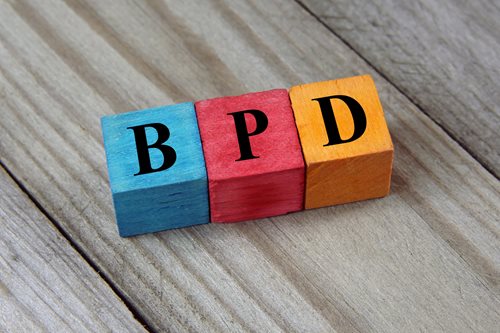October 03, 2017
By Alan E. Fruzzetti, Ph.D.

Living with Borderline Personality Disorder (BPD) is difficult for many reasons, including unstable relationships, emotional reactivity and dysregulation, impulsivity, and other challenging features. But what makes the condition even harder is that many people who live with Borderline Personality Disorder don’t even know they have it.
BPD is one of the most commonly misdiagnosed mental health conditions. It’s so misdiagnosed, in fact, that there isn’t even an accurate prevalence rate for the condition. What we do have is an estimate of 2–6% of the population, which actually makes BPD very prevalent. So how is it possible that a prevalent condition is so misdiagnosed? Here are just a few reasons why that could be.
BPD is one of the most heavily stigmatized mental health conditions a person can experience. This rampant stigma has both tangible and emotional consequences that can worsen existing difficulties with BPD. In the form of judgments, blame, negative assumptions and discrimination, stigma can lead a person experiencing BPD to feel ashamed and hide their suffering. This leads to further negative emotion (shame, loneliness, fear) and attempts to suppress distress. Suppression of distress and self-invalidation typically results in further emotion dysregulation, dysregulated thinking and out-of-control behavior.
Even if individuals are determined enough to push through the stigma and seek treatment, they may encounter even more stigma. Some mental health professionals are reluctant, or even refuse, to diagnose and/or treat BPD even when a person clearly meets diagnostic criteria.
This problem is even more pronounced among adolescents: Many clinicians fear that even correctly diagnosing a teenager with BPD will only worsen their problems because of stigma. In addition, many professionals incorrectly believe that it is not possible to diagnose BPD in adolescents. This results in underdiagnoses and inaccurate prevalence rates. Worst of all: It prohibits teens from receiving the specialty care they need when early detection and early intervention are essential to recovery.
People with BPD typically also meet the criteria for multiple other diagnoses, including depression, anxiety, post-traumatic stress disorder, substance use disorders, eating disorders, bipolar disorder, and so on. These disorders, of course, are not independent of BPD, but are connected and related through shared psychological, social and biological pathways. However, when these other diagnoses are the focus of treatment, they can dominate professionals’ attention, preventing any significant focus on the whole pattern of difficulties, resulting in missed diagnosis of BPD.
In particular, there is evidence that BPD is commonly misdiagnosed as Bipolar Disorder, Type 2. One study showed that 40% of people who met criteria for BPD but not for bipolar disorder were nevertheless misdiagnosed with Bipolar Type 2. This is most likely due to some similarities between symptoms: impulsive behavior, intense emotions and suicidal thinking. However, they are very different diagnoses with different treatments methods, so it’s crucial for mental health professionals to understand and know the difference.
Some of the problems with diagnosing result from the fact that there was no evidence of effective treatment for BPD until the 1990s. The first published evidence for the effectiveness of Dialectical Behavior Therapy was by Marsha Linehan in 1991. Before then, many clinicians blamed people with BPD for not getting better, rather than acknowledging that professionals had not yet figured out how to treat people with BPD successfully, or trying to find more effective pathways for treatment. Today, unfortunately, many professionals continue to think that BPD is not treatable despite growing evidence that it is. This leads some professionals to avoid giving the diagnosis even when someone meets the criteria.
Gender is another factor in misdiagnosis. The epidemiological rates of BPD in males and females are roughly equal. However, females are over-diagnosed and males are underdiagnosed significantly. This happens in part because women are overrepresented in most studies and treatment. Stereotypes about masculinity and femininity are also likely at play. It’s no surprise that females, who have long been stereotyped for being “emotional” or “hysterical,” are the ones who are over-diagnosed.
Of course, there are many other factors that influence the accuracy (or inaccuracy) of a BPD diagnosis. However, the more individuals with BPD and their families become aware of these problems, the more they can advocate for accuracy. A lack of understanding about BPD already prevents people from seeking treatment. So, for those who do seek help, we should make sure they are getting the proper treatment. And that starts with getting the correct diagnosis.
Alan E. Fruzzetti, PhD, is the program director of the 3East Boys Intensive Program and the director of Family Services for 3East Continuum. He has adapted and implemented dialectical behavior therapy for underserved populations, and developed many successful DBT programs for people with borderline personality disorder and other problems with emotion regulation. Dr. Fruzzetti is on the Board of Directors of the National Education Alliance for Borderline Personality Disorder, the International Society for DBT, and the Linehan Institute.
We’re always accepting submissions to the NAMI Blog! We feature the latest research, stories of recovery, ways to end stigma and strategies for living well with mental illness. Most importantly: We feature your voices.
LEARN MORENAMI HelpLine is available M-F, 10 a.m. – 10 p.m. ET. Call 800-950-6264,
text “NAMI” to 62640, or email. In a crisis, call or text 988 (24/7).